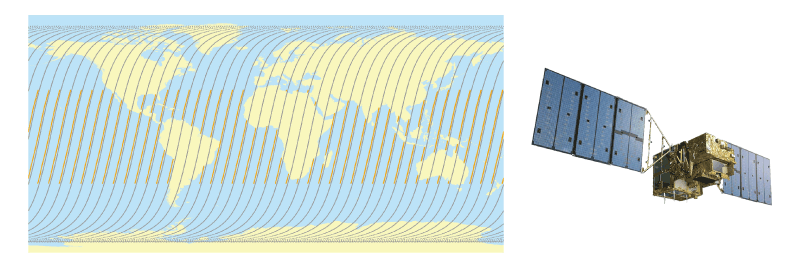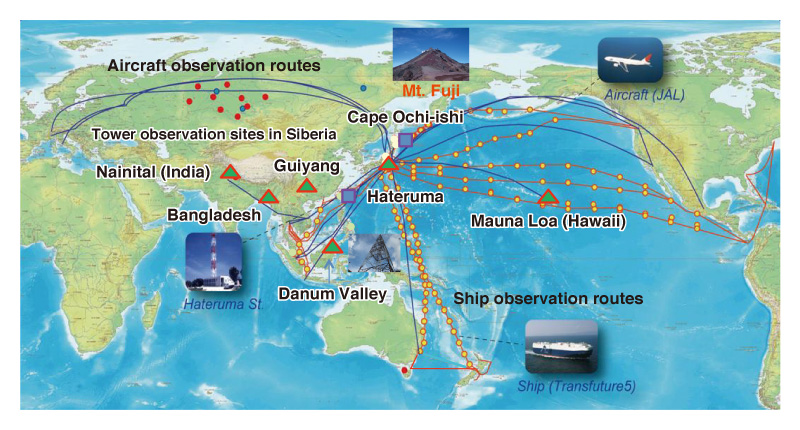Project 1Characteristics of the variation of greenhouse gas concentrations and projections for the future
The amount of greenhouse gas (GHG) emissions, in particular carbon dioxide (CO2), has increased drastically during the past 200 years. Recently, not only developed countries but, due to industrialization, also developing countries have been contributing to the increase of GHG emissions. How GHGs are spread and distributed around the world is influenced by the individual gases’ life time in the atmosphere as well as their emission and absorption sources. With respect to CO2, which has the largest contribution to climate change among GHGs, not only the amount of human induced emissions but also the distribution and variation of natural sinks are thought to affect future CO2 concentrations.
In the current project with sub-theme 1 “Estimation of the Global Distribution of GHG Fluxes by Atmospheric Monitoring”, we carry out GHG observations by satellite, aircraft, ships and from ground-based stations in order to grasp the global movement of CO2 including the natural carbon cycle. By integrating these observation results and developing global models, we seek to clarify the variation and regional distribution of GHG fluxes (top-down method).
In the project with sub-theme 2 “Estimation and Future Projection of Oceanic and Terrestrial CO2 Fluxes by Observation of GHG Fluxes and Related Indices” we observe the yearly CO2 uptake by land and ocean and seek to clarify its variation mechanisms (bottom-up method). Our ultimate objective is to provide a more accurate flux distribution map.

GOSAT orbits (daytime, 3 days, 44 orbits) [L]
Exterior view of GOSAT (© Japan Aerospace Exploration Agency, JAXA). [R]





